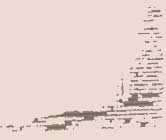The Khanaka of Kosim-sheikh
Kosim-sheikh was an acknowledged religious leader during the reign of
Abdullah-khan II (1561-1598), the most successful khan of Shaibanid dynasty. His body was laid to rest in
Kermine (at present time Nawoiy). However one of urban quarters in Bukhara formerly bore the name of Kosim-sheikh. There also is a mazar, known as the holy grave of Kosim-sheikh. Near to the mazar there is a well. People consider that water from this well is curative, believing that Kosim-sheikh miraculously made the well. In Kermine there is a big
khanaka-mosque (XVI), called the Khanaka of Kosim-sheikh.
Other sights
The minaret in Vabkent
The
minaret in Vabkent is one of the most refined works of local architecture. The date of the beginning of its construction (1196-97) is visible in the form of
Kufic inscription in the lower decorative belt round the trunk of the minaret. The inscription also mentions the name of
Burkhan-ad-Din Ayud-al-Aziz II, who probably ordered the construction. In the upper decorative belt it is written in the form of Divani inscription that the minaret was completed in 595
A.H., i.e. in 1198-99.
Like the Kalyan Minaret, the minaret in Vabkent made a in the form of a
circular-pillar brick tower, narrowing upwards, of 6,2 meters (20,34 feet) diameter at the bottom, 2,8 meters (9,19 feet) overhead and 40,3 meters (132,22 feet) high. There is also a brick spiral staircase that twists up inside around the pillar, leading to the landing in rotunda - skylight, which based on a
stalactite cornice (sharafa). The minaret in Vabkent, built to the mosque that is completely destroyed, is the
most earlier imitation of Kalyan Minaret.
Ghujdawan
Ghujdawan - a district administrative centre along the road to Samarkand - is famous first of all as a native place of
Abdul Khaliq al-Ghujdawani, the founder of Sufi order (tarica) called
Khwajaganiyya the predecessor of Naqshbandiyya. Together with Ahmad Yasavi young Abdul Khaliq Ghujdawani was one of four successors of
Yusuf ibn al-Husayn al-Hamadani (the prominent Sufi master of his time). Al-Ghujdawani has died in about 1220 when he was 95. In 1433, to the west of al-Ghujdawani's mazar, by order of Ulugh Beg, was built the latest of three his madrasahs.
Rabat-i-Malik and the Malik sardoba
On the roadside in the
Malik Steppe, one can see the portal of the 12th century, which leads to the ruins of the
fortress Rabat-i-Malik -"Prince's rabat".
The word "rabat" means "castle", or "fortress". It refers to the fortified settlements and places of rest along caravan routes. During the
heyday of the Silk Road, travelers and merchants gathered within the walls of this fortress on the road from Samarkand to Bukhara. The remainders of finishing - carved stucco,
figured ornamental brickwork and unglazed carved ceramics - give food for reflection about the lost beauty.
The inhabitants of the rabat took water from the
Malik sardoba, a gigantic underground brick tank covered with a dome. Water to sardoba, by passing through subterranean canal - "kiaryz", comes from
Zaravshan River.
Sources
1.
Dmitriy Page. The Guide to Bukhara. History and sights.
2. Дмитрий
Пэйдж. Бухара. Путеводитель по архитектурным и историческим
достопримечательностям
See also
1.
Ханака Касим-шейха
2.
Kosim-Scheich Hanaka
3. Bukhara Map
|









